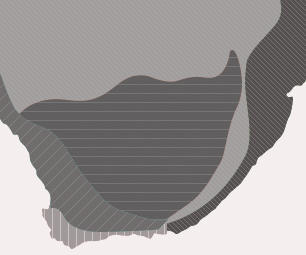Phaenocoma prolifera
Phaenocoma prolifera (L.) D.Don
Family: Asteraceae
Common names: pink everlasting, pink strawflower, Cape everlasting (Eng.); rooisewejaartjie, strooiblommetjie (Afr.)
Introduction
I often think of this species as the dinosaur of the everlastings. It is a strong rigid shrub with brilliant pink bracts and large flower heads. It is common in the fynbos on mountain slopes in the Western Cape and can easily be spotted from a distance.

Description
Description
Plants are rigid, erect, single-stemmed woody shrubs up to 1.2 m tall. Main stems are up to 60 mm diameter. Branches are densely leafy and also have numerous short leafy stalks at right angles to the main branches. Main branches decrease in length from the base upwards so that many plants resemble miniature Christmas trees.

Leaves are very small, knob-like. Flower heads, borne terminal on branches, are up to 60 mm in diameter and contain 800 to 1000 individual flowers with very showy bright pink, papery bracts. The bracts fade to almost white and become worn with age. Pappus is present and up to 150 pappus bristles per flower have been counted. For more details about the structure of these flowers see Asteraceae. Flowers are borne from spring to midsummer (September to January).
Conservation Status
Status
Least Concern (LC).
Distribution and habitat
Distribution description
Distributed in the Western Cape, from Ceres to the Cape Peninsula to Robinson Pass, on mountain slopes and in valleys, mostly on sandy soil and at altitudes ranging from sea level to 1 500 m.
Derivation of name and historical aspects
History
The name Phaenocoma is derived from the Greek phaino: to shine, and coma: hair. This refers to the shiny bracts which look like a 'shiny hairdo'. Jackson (1990) commented on the lack of hair on the bracts but did not offer an alternative explanation.
Phaenocoma is a monotypic genus (only one species) restricted to the Western Cape.
Ecology
Ecology
Monkey beetles are often found on the flower heads and can contribute to pollination although they probably often only feed on the pollen.
Uses
Use
Nothing is known about this aspect.
Growing Phaenocoma prolifera
Grow
The plant has potential as a garden plant or pot plant, but is not often cultivated.
Although the seeds germinate well I am not aware of plants raised from seed. Seed germination is slow but generally good. In trials done by myself a 100% germination was achieved after 12 days.
References
- Goldblatt, P. & Manning, J. 2002. Cape plants: a conspectus of the Cape flora of South Africa. Strelitzia 9. National Botanical Institute, Pretoria and Missouri Botanical Garden, St Louis.
- Jackson, W.P.U. 1990. Origins and meanings of names of South African plant genera. University of Cape Town.
- Koekemoer, M. 2002. Systematics of the Relhaniina (Asteraceae - Gnaphalieae).Unpublished PhD thesis (RAU).
Credits
Marinda Koekemoer
National Herbarium Pretoria
September 2004
Plant Attributes:
Plant Type: Shrub
SA Distribution: Western Cape
Soil type: Sandy
Flowering season: Spring, Early Summer
PH: Acid
Flower colour: Pink
Aspect: Full Sun
Gardening skill: Challenging
Special Features:
Horticultural zones







Rate this article
Article well written and informative
Rate this plant
Is this an interesting plant?
Login to add your Comment
Back to topNot registered yet? Click here to register.